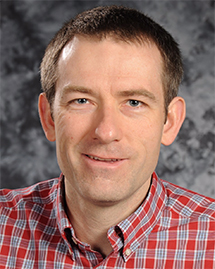Seminars
Dr. Benjamin Spencer
Nuclear Fuels and Materials Division
Idaho National Laboratory
Overview of MOOSE-based Fracture Mechanics Capabilities

ABSTRACT: The MOOSE framework is a readily extensible computational platform that is amenable to modeling a wide variety of multiphysics problems. It is being applied to a variety of problems of interest for nuclear power where solid mechanics plays an important role, notably for nuclear fuel performance and structural component simulations in the BISON and Grizzly codes, respectively. In many of these problems, fracture also plays an important role. For example, light water reactor fuel fractures extensively during normal operations, which has important operational and safety ramifications. Fracture also plays an important role in safety of key nuclear power plant structures such as reactor pressure vessels, containment structures, and core internal structures.
A number of methods for modeling fracture in MOOSE or MOOSE-based codes have been developed and are being continuously improved to meet the diverse needs of these applications. For some of these applications, linear elastic fracture mechanics analysis of a single crack is sufficient, while others require the ability to model propagation of multiple interacting cracks and fragmentation. Methods provided by MOOSE include the extended finite element method (XFEM), smeared cracking, peridynamics, and phase field methods. In addition, application-specific reduced order models for linear elastic fracture mechanics are provided by Grizzly. This presentation gives a high-level overview of these methods, including an assessment of the types of problems for which they are most applicable, current levels of maturity, and plans for future development.
BIOGRAPHY: Benjamin Spencer is a computational scientist in the Computational Mechanics and Materials department at Idaho National Laboratory (INL), where he has worked since 2011. In this role, he actively contributes to development of the BISON fuel performance code and the MOOSE framework and leads the development of the Grizzly structural component aging code. He also leads the Structural Materials and Chemistry technical area in the Department of Energy’s Nuclear Energy Advanced Modeling and Simulation Program. Prior to coming to INL, he worked for 9 years at Sandia National Laboratories developing and applying computational mechanics codes to a variety of applications. His first exposure to fracture mechanics was at the University of Colorado, where he developed finite element methods for modeling reinforced concrete as a graduate student. He holds an MS and a PhD in Civil Engineering from the University of Colorado, and a BS in Civil Engineering from Brigham Young University. He has lived most of his life in the shadows of the Rocky Mountains and enjoys sharing his love of the outdoors with his family.